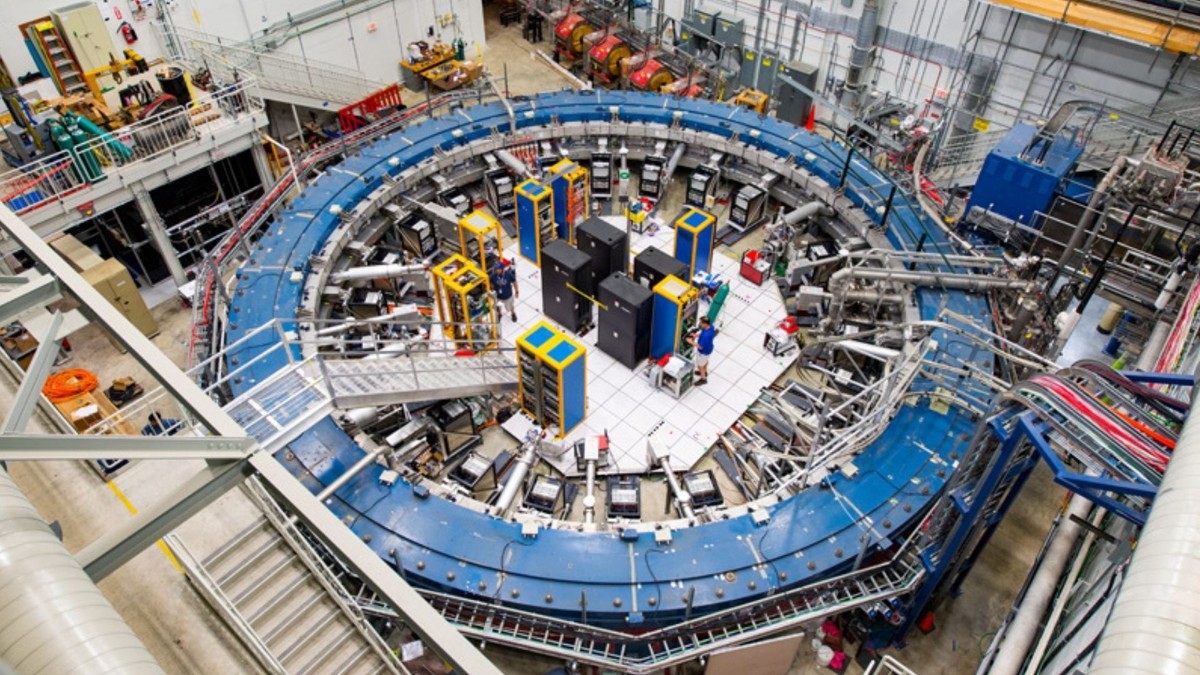The long-anticipated results of an experiment at one of the world’s most powerful particle physics laboratories has confirmed tantalizing hints of new and unexplained physics that may challenge our understanding of reality.
On Wednesday, scientists revealed the findings of the Muon g-2 experiment, conducted at the US Department of Energy’s Fermi National Accelerator Laboratory (Fermilab), which was designed to resolve a weird discrepancy between theoretical predictions and real-life tests that emerged 20 years ago.
“Today is an extraordinary day, long awaited not only by us but by the whole international physics community,” said Graziano Venanzoni, co-spokesperson of the Muon g-2 experiment and physicist at the Italian National Institute for Nuclear Physics, in a statement. “A large amount of credit goes to our young researchers who, with their talent, ideas and enthusiasm, have allowed us to achieve this incredible result.”
The ongoing experiment focuses on muons, particles that are very similar to electrons except that they are about 200 times more massive. Electrons and muons both have magnetic fields that can be used to mine information about particle physics as a whole, which is important for understanding the fundamental nature of the universe we live in.
Over several decades, scientists have developed a successful theory called the Standard Model of particle physics that explains many of the forces and interactions that govern the behavior of matter on very small scales. But sometimes scientists find gaps between the Standard Model and experimental results, such as the 2001 findings of a test run at DOE’s Brookhaven National Laboratory (BNL).
When muons are exposed to an external magnetic field, their own internal magnet wobbles, a result that is predicted by the Standard Model. But the BNL experiment showed that a muon’s magnet is much wobblier than expected, perhaps suggesting that some undiscovered particle or force might be influencing this important property.
The BNL anomaly sat outside of the statistical margin of error by about three standards of deviation, which scientists call a “three-sigma” deviation from predictions. To be really sure of a scientific breakthrough, scientists shoot for a five-sigma level of deviation, which is equivalent to a 1 in 3.5 million chance of an error rather than a real discovery.
For 20 years, scientists have been hankering for a more precise follow-up experiment that might confirm or disagree with the BNL results. The Muon g-2 experiment is literally built from the infrastructure of the 2001 BNL experiment, which was conducted in a 50-foot-diameter superconducting magnetic storage ring.
This ring was packed up and shipped from BNL’s facilities on Long Island, New York, to the greater Chicago area where Fermilab is located. After reassembling and upgrading the huge instrument, Fermilab initiated its Muon g-2 experiment in 2018.
After decades of speculation, the experiment has not only confirmed the anomaly detected by BNL, but raised the confidence level to 4.2 sigma. This means that the odds that the discrepancy is a result of statistical fluctuations are about 1 in 40,000. While that figure doesn’t cross the hallowed five sigma threshold, it still strongly suggests that something weird and unexplained is influencing the magnetic field of muons in ways that are not accounted for by the Standard Model.
The Fermilab experiment isn’t the final word on the muon mystery. Interestingly, another team of scientists published a paper in Nature on Wednesday that suggests that the muon’s magnetic behavior is in line with the Standard Model, and that new physics may not be required to explain its properties. This research is quite different from the Fermilab approach because it is based on theoretical calculations that were run through supercomputers located across Europe, rather than experimental results.
Ultimately, both the experimental findings from Fermilab and the supercomputer models will need to be developed further to understand what is really going on with the muon—and what that means for our comprehension of our physical reality. To that end, the Fermilab team emphasized that they are only at the very beginning phase of the Muon g-2 experiment, and even more precise data is expected to flow in over the coming years.
“So far we have analyzed less than 6% of the data that the experiment will eventually collect,” said Chris Polly, a co-spokesperson for the Muon g-2 experiment who was also involved with the BNL experiment, in the Fermilab statement.
“Although these first results are telling us that there is an intriguing difference with the Standard Model, we will learn much more in the next couple of years,” he concluded.
